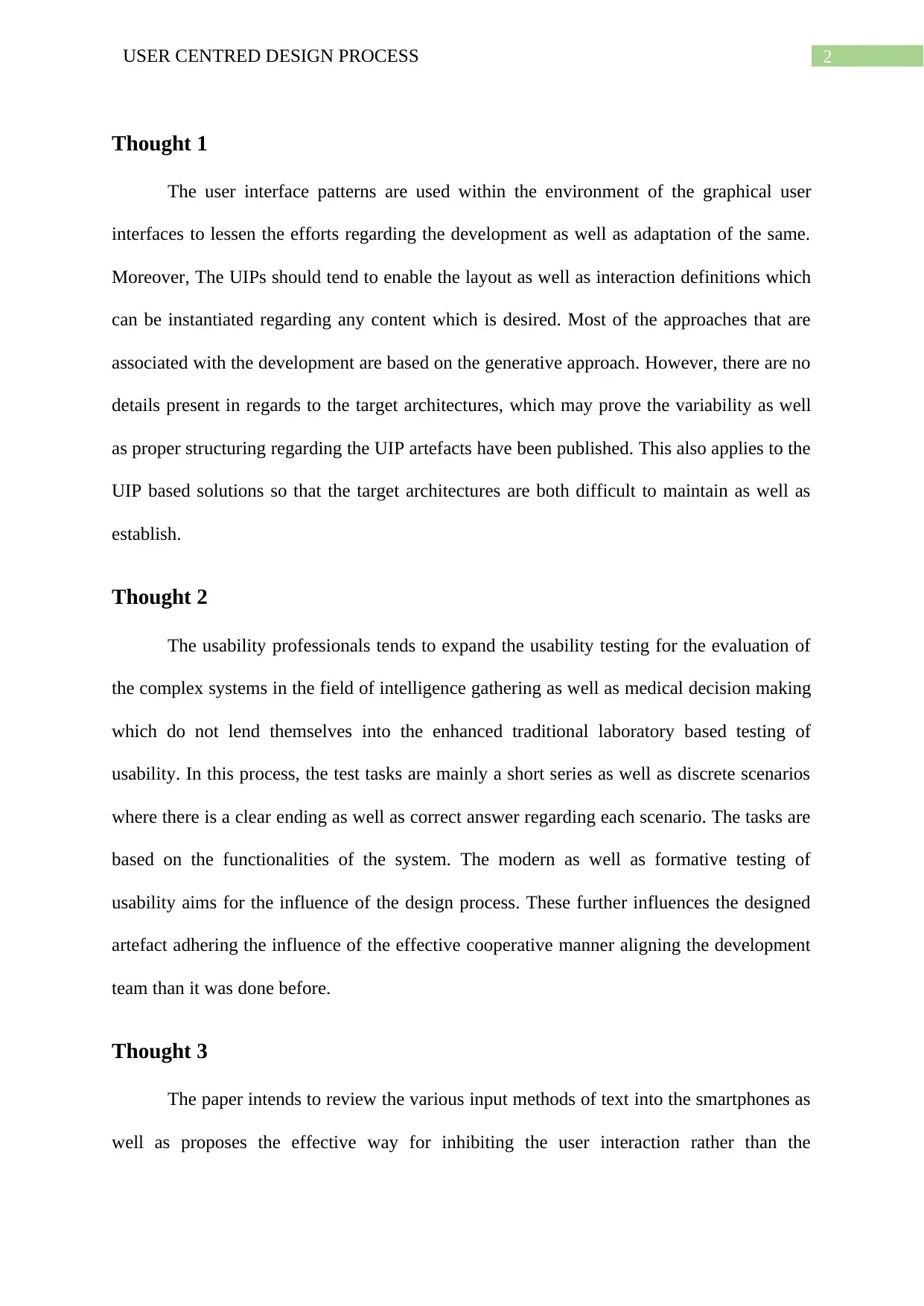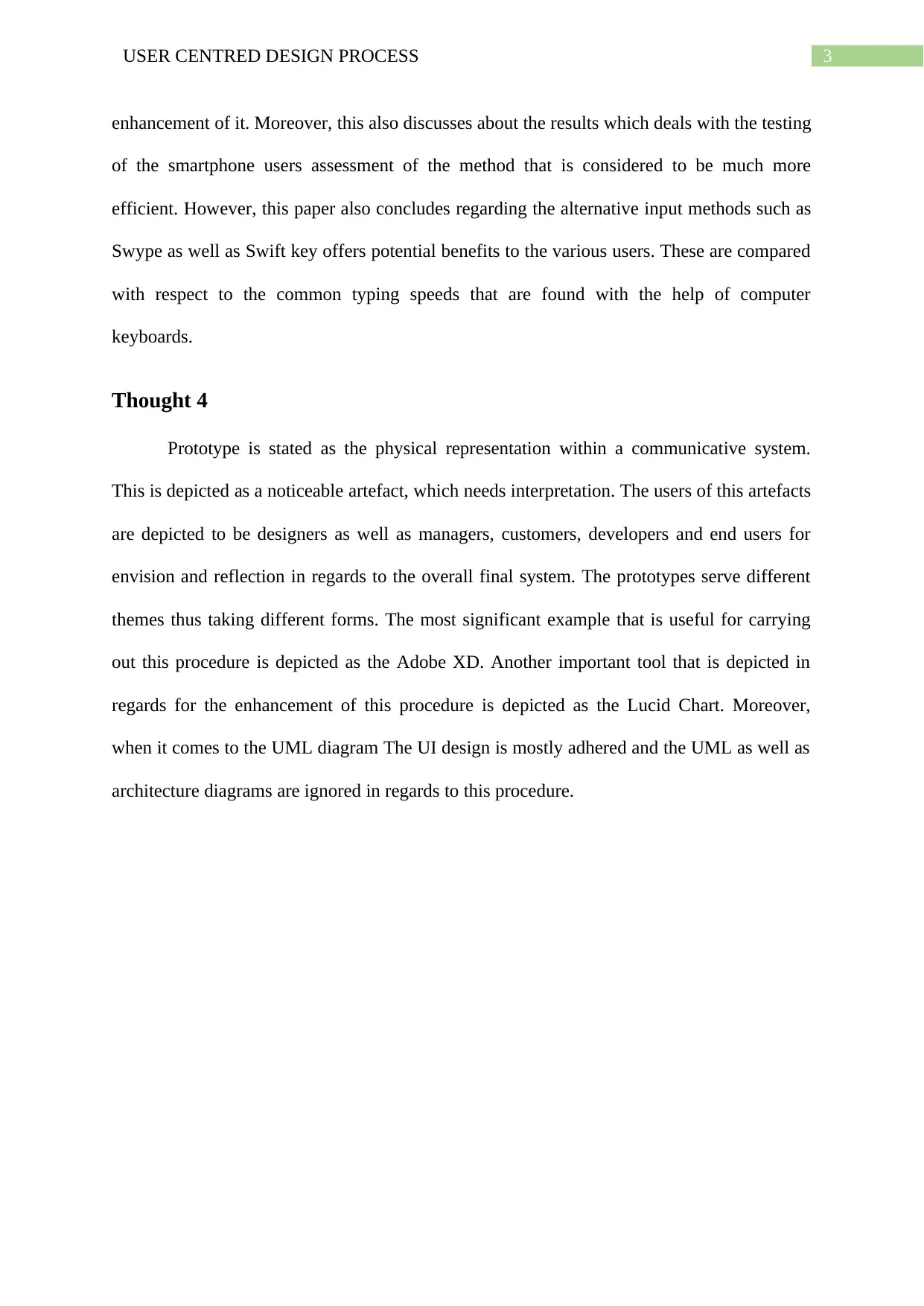Analysis of User Centered Design Process for Software Design
VerifiedAdded on 2022/11/18
|4
|560
|271
Homework Assignment
AI Summary
This assignment provides an analysis of the User-Centered Design (UCD) process, addressing the impact of User Interface Patterns (UIPs) on software architecture quality, usability testing for complex systems, and various text input methods for smartphones. The analysis includes discussion on the importance of UIPs in enhancing GUI development, the expansion of usability testing beyond traditional methods, and an evaluation of text input methods. The assignment also covers the role of prototypes in the UCD process, including examples like Adobe XD and Lucid Chart, while acknowledging the significance of user-centered principles in design decision-making. The student has provided their thoughts on the provided papers and the UCD process.
1 out of 4










![[object Object]](/_next/static/media/star-bottom.7253800d.svg)